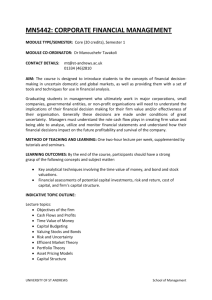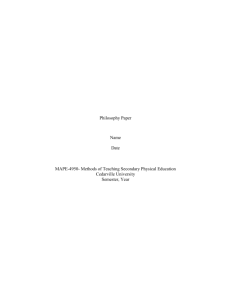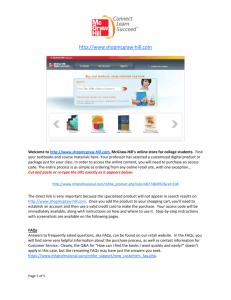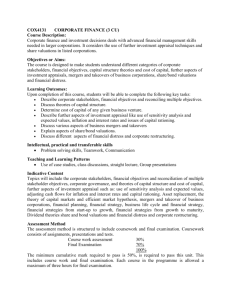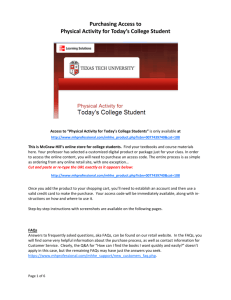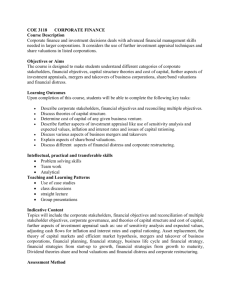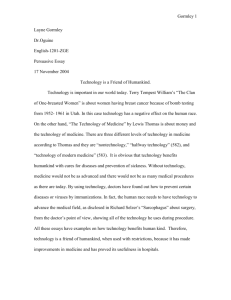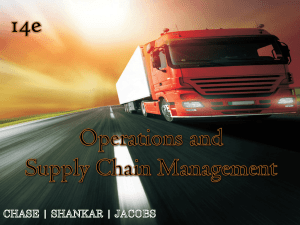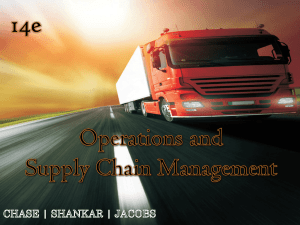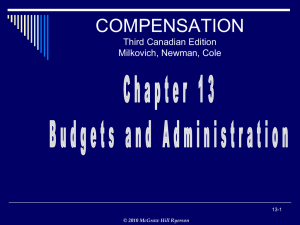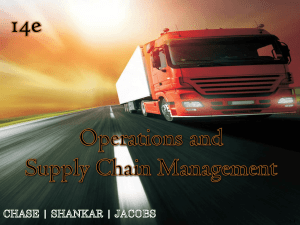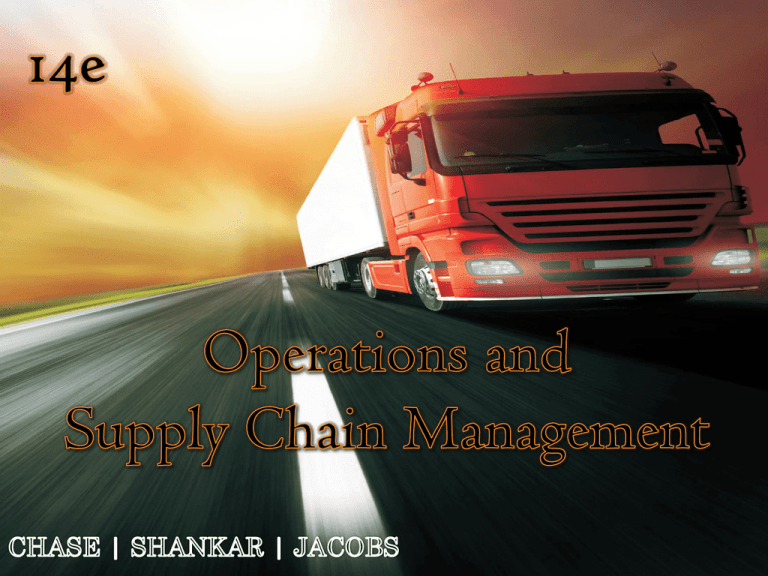
1–1
Chapter One
McGraw-Hill/Irwin
Copyright © 2014 by The McGraw-Hill Companies, Inc. All rights reserved.
1–2
• LO1-2: Know the potential career
opportunities in operations and supply
chain management.
• LO1-3: Recognize the major concepts that
define the operations and supply chain
management field.
Copyright © 2014 by McGraw Hill Education (India) Private Limited. All rights reserved.
• LO1-1: Identify the elements of operations
and supply chain management.
• LO1-4: Evaluate the efficiency of a firm.
1–3
–
–
–
–
–
–
Product design
Purchasing
Manufacturing
Service operations
Logistics
Distribution
• Success depends upon
Copyright © 2014 by McGraw Hill Education (India) Private Limited. All rights reserved.
• Operations and supply chain management
involves
– Strategy
– Processes to deliver products and services
– Analytics to support the decisions needed to manage
the firm
1–4
• Operations and supply chain
management (OSCM) is
Copyright © 2014 by McGraw Hill Education (India) Private Limited. All rights reserved.
• The design, operation, and improvement
of the systems that create and delivery
the firm’s primary products and services
– A functional field of business
– Concerned with the management of the
entire production/delivery system
1–5
Manufacturing and
service processes used
to transform resources
into products
Processes that move
information and
material to and from
the firm
Copyright © 2014 by McGraw Hill Education (India) Private Limited. All rights reserved.
Operations
Supply
Chain
1–6
1–7
Copyright © 2014 by McGraw Hill Education (India) Private Limited. All rights reserved.
1–8
Copyright © 2014 by McGraw Hill Education (India) Private Limited. All rights reserved.
1–9
Copyright © 2014 by McGraw Hill Education (India) Private Limited. All rights reserved.
Copyright © 2014 by McGraw Hill Education (India) Private Limited. All rights reserved.
• Planning – processes needed to operate an existing supply
chain
• Sourcing – selection of suppliers that will deliver the goods
and services needed to create the firm’s product
• Making – producing the major product or service
• Delivering – logistics processes such as selecting carriers,
coordinating the movement of goods and information, and
collecting payments from customers
• Returning – receiving worn-out, excess, and/or defective
products back from customers
1–10
Pure Goods
Core Goods
Tangible
Less interaction with customers
Often homogeneous
Not perishable – can be inventoried
Services
Core Services
Pure Services
Intangible
Interaction with customer required
Inherently heterogeneous
Perishable/time dependent
Defined and evaluated as a package of features
Copyright © 2014 by McGraw Hill Education (India) Private Limited. All rights reserved.
Goods
1–11
Hospital
administrator
Branch manager
Department
store manager
Call center
manager
Supply chain
manager
Purchasing
manager
Quality control
manager
Business process
improvement
analyst
Lean
improvement
manager
Project manager
Production
control analyst
Facilities
manager
Chief operating
officer
Copyright © 2014 by McGraw Hill Education (India) Private Limited. All rights reserved.
Plant manager
1–12
Manufacturing strategy developed
Just-in-time (JIT) production pioneered
by the Japanese
Mid 1980s
Service quality and productivity
Early 1980s
Total quality management (TQM) Early 1990s
and Quality certification programs
Six-sigma quality
Mid 1990s
Business process reengineering
Late 1990s
(BPR)
Electronic commerce
Supply chain
management (SCM)
Early 2000s
Business analytics
Copyright © 2014 by McGraw Hill Education (India) Private Limited. All rights reserved.
Late 1970s
Service science
Mid 2010s
1–13
Copyright © 2014 by McGraw Hill Education (India) Private Limited. All rights reserved.
• Coordinating relationships between
members of SC
• Optimizing global network of suppliers,
producers, and distributors
• Managing customer touch points
• Raising awareness of OSCM as a
competitive weapon
• Sustainability and triple bottom line
1–14
• Doing something at the lowest possible cost
Effectiveness
• Doing the right things to create the most value for your
customer
Copyright © 2014 by McGraw Hill Education (India) Private Limited. All rights reserved.
Efficiency
Value
• The attractiveness of a product relative to its cost
1–15
– From an operations and supply chain perspective,
the relative cost of providing a good or service is
closely related to earnings growth
• Management efficiency ratios
– Labor productivity
Net income per employee
Revenue (or sales) per employee
Copyright © 2014 by McGraw Hill Education (India) Private Limited. All rights reserved.
• Comparison of firms is important to investors
– Asset productivity
1–16


